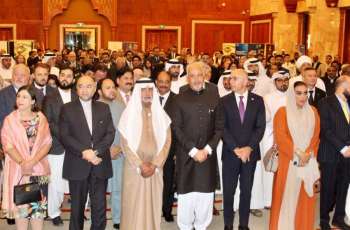NEW DELHI (Pakistan Point News / Sputnik - 27th February, 2021) India's External Affairs Minister (EAM) Subrahmanyam Jaishankar has discussed the situation in the border region of Ladakh and the relations between New Delhi and Beijing in a phone conversation with his Chinese counterpart, Wang Yi, the Indian External Affairs Ministry said Friday.
The two sides pulled out their troops from the Lake Pangong Tso area of the so-called Line of Actual Control (LAC) earlier in the month and held the 10th round of the senior commanders' meeting, discussing the remaining issues in the region.
"The External Affairs Minister and the State Councillor and Foreign Minister of China, H.E. Mr. Wang Yi, had a phone conversation yesterday afternoon. It lasted 75 minutes. The two Foreign Ministers discussed the situation along the LAC in Eastern Ladakh and also issues related to overall India-China relations," the ministry said in a statement.
While mentioning the recent disengagement, Jaishankar stressed that now both sides should settle other border issues, adding that when the withdrawal at all critical points is reached, New Delhi and Beijing could consider a broader de-escalation of forces, as well as work towards peace in the region.
"State Councillor and Foreign Minister Wang Yi, on his part, expressed satisfaction at the progress made so far. It was an important step forward for restoration of peace and tranquility in border areas. He felt that both sides should make efforts to consolidate outcomes. It was also necessary to sincerely implement the common understanding reached at various levels," the ministry added.
Since the 1962 war between India and China, the two lack a duly demarcated borderline in the Himalayas. As a consequence, the area has since frequented seeing hassles between the military of both sides.
Following a deadly escalation near Lake Pangong Tso last May, India and China boosted their military presence in the disputed region, while simultaneously launching the disengagement consultations. As talks were underway, another two major clashes took place in June and August of that year which left dozens of soldiers killed on both sides.



